Best KDE distro of 2013
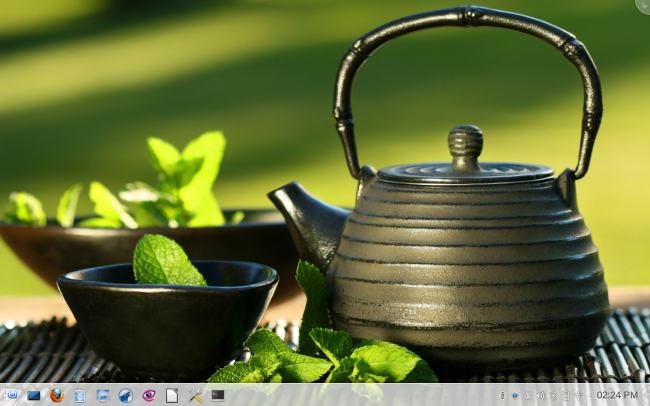
Normally, at the end of the year, I tend to run my best annual distro roundups, choosing the finest among five operating systems or flavors thereof that showed the greatest promise in terms of stability, usability, elegance, support, and other curious items in the outgoing twelve-month period. But I have never dedicated much thought to selecting the best implementation of any one particular desktop environment, regardless of the system underneath.
But when you think about it, it makes a lot of sense. Oftentimes, distributions rise and fall based on their desktop session, because that is what users see and interact with, and if there are problems in the presentation layer, they will come to bear. While the kernel might be identical for various editions of any one distro, the application stack and the ease of use make all the difference. Take Ubuntu and Kubuntu, for example. Which brings us to this showdown. True, the year has still some three and a half months left to run, which means we will miss the autumn fever with this compilation, but still, let us vote the best KDE distro around.
Candidate 1: openSUSE
The stardom of openSUSE seems to be behind us. In my un-humble opinion, the greatness of SUSE was in the 11.X series, with phenomenal releases, one after another. The first two versions of the 12th series were somewhat lukewarm, but then, openSUSE did a rather interesting comeback with the 12.3 edition.
It had a few shortcomings, true. The networking was not enable by default and some of the codecs were missing. But after a lukewarm start, it offered an excellent and safe installation, an extremely stable setup without any crashes, awesome responsiveness, and truly the best looking KDE session I have ever seen, with a spectacular mash of black and green. If you can ignore the initial woes, then this KDE desktop offers both beauty and stability, plus a very decent application stack.
Candidate 2: Netrunner OS
Based on Kubuntu, which comes right next, Netrunner OS is an out-of-the-box implementation of its parent, with everything configured, or at least designed to be configured, to work right away. Then, you also have a fairly strong Web and cloud integration, with a bunch of unique services, like Web Accounts and Runners-ID.
Netrunner 5 Enigma also offers a full multimedia stack, as well as a highly polished and elegant desktop, with a slight nod toward the Windows constellation of usability, which is meant to put new users at ease. The application layer is particularly rich, but the wealth of features comes at the expense of system resources usage, some extra heating and a shortened battery life. However, as a complete package, Netrunner OS offers among the most straightforward experiences for a wide range of users, even though its struggle for perfection can be a detriment sometimes.
Candidate 3: Kubuntu
Kubuntu is the unsung underdog of the Ubuntu family, as all the glory belongs to the Unity-flavored version. But Raring Ringtail is a surprisingly good distribution, with glamour safely hidden away. It is the first Linux distro that I successfully managed to upgrade in-vivo. Pretty much everything seems to work well, although you will have to tick the right options to get the juicier bits of the multimedia stack enabled after the installation. As far as the KDE goes, very refined, very polished and silky smooth, with a phenomenal performance. One thing that you might fight tricky is the printing over network, but other than that, there’s little to fault this KDE incarnation.
Candidate 4: SolydK
Few people have heard of this small, dual-nature distribution, which normally goes under the label of SolydXK, and the last two letters change depending whether you choose the Xfce or the KDE flavor. It’s a small project, inspired and based on Linux Mint Debian Edition, so it is ever so slightly different from the overwhelming Ubuntu experience you get all over the place.
Still, it managed to provide all the fun right away, by default, and it packs a bunch of interesting tools and utilities, as well as gaming platforms, like PlayOnLinux and Steam. With no crashes and a good but not the best system responsiveness and resource utilization, SolydK is a surprising contender for the highest accolade. At stake, the tiny user base, the peril of disappearing without a trace, but possibly outweighed by a very refined and well-rounded experience, showing what KDE can do when given love and attention.
Candidate 5: Linux Mint
Normally, you do not associate Linux Mint with KDE. It’s almost an afterthought, and the distro usually packs spices and friends, or Cinnamon and MATE for those of you weak in innuendos. So it’s definitely a Gnome-taxonomied beast, which makes the KDE work all the more interesting.
But Olivia KDE is not just a casual one night stand. It’s a serious desktop, with all the necessary pieces put well together, even if the glue does not smack of bold enthusiasm like the other flavors. You do get excellent consistency, a very balanced applications stack, smoothness, beauty, and a moderately hungry diet. Well, the KDE stack ate more memory, but gave back one of the quietest CPU profiles I have ever seen with KDE. Printing is equally flawed as in Kubuntu. But that’s where your problems start and end, and if you like the work of the Mint family, you won’t go wrong with this ultra-friendly edition.
And the winner is …
So let us vote my favorite. Bias and taste may apply without further notice. Now, what qualifies as the best? There are quite a few parameters that need to be taken into account. But a good history record, solid support base, a chance for continuity, and a consistency of experience are definitely a must. Stability is also critical. Being smart but not over-complex, another. And since we’re talking KDE only, essentially, the big deciding factor is in the small details, the polish, the perks, the way the session is brought to life, the way the emotional response is triggered with the user. Is this just yet another slab of pixels you use to run your applications, or is there a whiff of delight that entices and compels you to move your mouse cursor about and discover new things?
When I bunch all these together into a singularity, a single winner emerges from the bunch. Now, that does not mean the others are bad in any sense. After all, these are the top five contestants for 2013, which means many others have been left aside without any additional consideration. So it can’t be bad, in any sense. But the crown goes to Kubuntu 13.04 Raring Ringtail.
All of the five candidates have problems, it’s just that Raring has the fewest of them. It is definitely one of the more polished KDE flavors around, all things considered. True, Mint and Netrunner offer more out of the box, but the former lacks spirit, and the latter experienced a bunch of application crashes and bugs, caused by its bold and complex approach to solving everything. SolydK is excellent, too, but it’s a newcomer, and it might not be with us next year, the same thing that happened to Fuduntu. openSUSE has a chance to climb back to the podium, but it needs to sweat a little to regain its lost glory, although it seems to be on the right track.
Conclusion
So beauty plus stability plus accessibility, the precarious triple-point equilibrium lands flat in the court of Kubuntu. This is quite an achievement, and the team behind their project should be really proud. Raring Ringtail is an awesome KDE demonstrator, and it tickles all the right glands. If you have friends and family you might want to expose to Linux, then Kubuntu will probably be the best overall choice.
Once again, this does not mean you should not be trying or using the others. In fact, you should, and I strongly encourage you to do so. KDE has grown and flourished in recent years, and now it’s sleeker and faster than ever. Good and exciting times. All that said, I expect to see extra work invested in ironing out all the little pests and bugs, and making the KDE desktop even more elegant and beautiful than it is today. Well, I guess that would be all. It is time for comments.

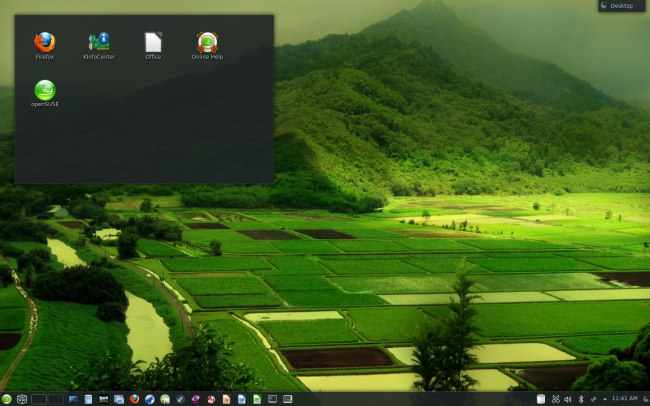
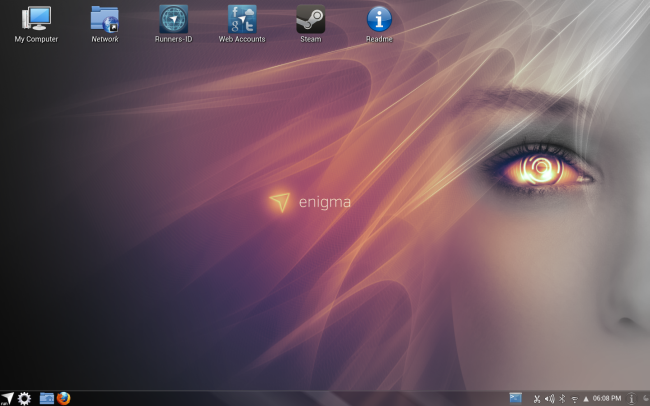
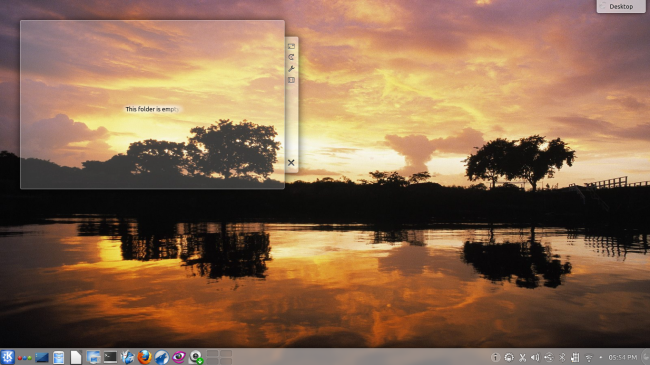
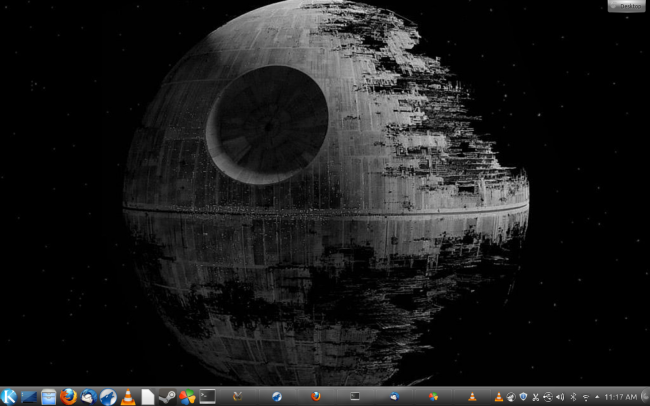
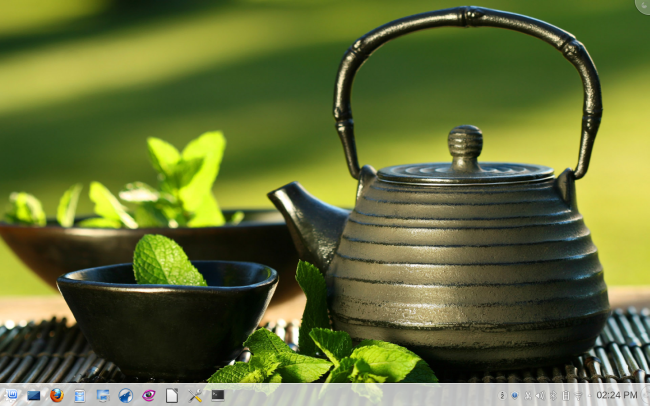
Netrunner is the KDE flavor that made the whole complex thing that is KDE click for me. I’ve installed and used all 5 of these distributions. All are very good. Personally, for the Ubuntu font rendering, I’d go for Kubuntu ot Netrunner. Infinality is available for all of them.
Infinality is enough. Crazy better than Windows and OS X.
SolydK is my choice :D
I’m all for SolydK. Not that any of the other contenders are bad. Far from. But, SolydK just clicks for me. It is my primary OS, with Mint Debian being on my server, SolydX on the laptop that I take to college and Windows 7 Home Premium sitting inside of a virtual machine on my external hard drive.
Have you heard of Arch? It’s kind of like Debian – a very well maintained distribution that a lot of other distributions are based on. Perhaps next year you could include an Arch based KDE distro as one of your candidates, for example Manjaro or Chakra.
Yeah, if you forgot Arch you could have also included Windows as a KDE distribution.
SolydK certainly works for me. Use it as my every day desktop in a business environment.
I heard that the company behind kubuntu is also giving commercial support for it. That’s a good sign of maturity imho.
I prefer Kanotix, or even Kwheezy but hey, guess they weren’t invited to play in your yard.
Kubuntu LTS with kubuntu-backports ppa is a solid long term solution for lovers of KDE, it keeps the core super stable with LTS updates and the KDE apps are all updated to latest, can’t get any better.
Netrunner OS is my choice. Reasons:
1. Out of the box for all: multimedia, drivers, login menu, etc.
2. Best reaction when plugin external devices compared with the otyher cited OS(es).
3. Beautiful theme :)
Only one cons: it is not rolling release.
I’ve been using KDE from 2.1 version. Yes, Mandrake, Kubuntu, Mepis, Debian stable, Kanotix, and others. Now I am using (and vote) for SolydK. The reason? balance, It is, for me, a balance between bleeding edge and stability. Easy for newcomers (not the case, but it is a plus if you want to spread the word.
But, once more, thanks for this accurate review, Dedoimedo.
From my personal experience Mint KDE was the best performing distro(I used the three kins of ubuntu). You should have tried chakra as well its a nice KDE centric distro.
openSUSE is the distro that hooked me to the Linux world. I like it for its stability, professionalism and beauty.
Same here. Started with 12.3. Got it loaded on 3 computers, 2 desktops and a laptop. Flirted with Gnome for about 3 months. Went back to KDE, asked for forgiveness and have never looked back.
I slightly prefer Mint KDE to Kubuntu, due to it’s software updater, out-of-box multimedia support, and inclusion of synaptic.
I am kind of surprised Mageia and PCLinuxOS were left out as both seem to always get mentioned as great KDE distros.
Dedoimedo, do you plan at taking a look at those in the near future?
Well, one day, eventually :)
Dedoimedo
And what about CentOS?
openSUSE is the best KDE experience around these days.
and slackware ? i use slackware-current and it’s simple and stable !
And has no dependency resolution, so it’s already been shot in both feet before the race for best KDE distro even begins.
‘slapt-get’ works similarly to ‘apt-get’ and has been around for a while. Slackware is by far my favorite distro but I sometimes call NetRunner ‘Home’ too.
Actually, openSUSE on one of my machines has been upgraded in-vivo several times, from 11.4 to 12.3. On another machine, 12.2 to 12.3 did not go smoothly, so I decided to do a clean install – but that was a machine with lots of extra repos. OTOH, I’ve managed twice to kill Kubuntu with a live distribution update on different machines. So YMMV – in all distros.
The only thing that’s wrong with openSUSE 12.3 networking on a completely new install is that it only works for you after another reboot – it should not do that, of course, but it’s no catastrophe either. It should just be mentioned in the release notes.
In 2011 I go a very nice new pc as my main machine and switched from openSUSE to Kubuntu, but after several months of upgrades stability became worse and I had random crashes. I tried upgrading to 11.10, but that did not work. I tried reinstalling, but every time I told the installer that my /home was on another partition it crashed (happened with 12.4 as well on another pc, although I generally love 12.4), so I switched back to openSUSE, though I still have Kubuntu on my laptop. In the long run, even if not all releases were equally nice, openSUSE has proved to me to be the most dependable and – recently – also VERY fast.
As a business owner done with windows I spent a couple months looking for a KDE distro that would fit well. SolydK won me over hands down.
“It’s almost an afterthought, and the distro usually packs spices and
friends, or Cinnamon and MATE for those of you weak in innuendos”
You do realize that “MATE” is a spanish word for the preferred hot drink of most of South America? ;-) Pronounced “MAH-tay”, as in “Hey, gimme mah tay!” Nothing to do with Australian “mates”.
I sure do, but then it would kill my innuendo.
So call it an artistic (autistic) flair.
Dedoimedo
I use Chakra Linux, no complain.
I have to agree with the top pick and in my opinion Mint KDE deserves honorable mention. Both are ready for prime time and would make excellent choices as primary desktops.
I use SolydK. Debian based, with KDE 4.11.1 compiled specifically for it, Kernel 3.10-2 Firefox 23 etc. Very stable and yet up to date..
What? There is not even a mention of Fedora KDE. (-_-) The Lord of Linuxland shall burn you in hot oil until Fedora 30 is out. Amen!
That’s just a few months away.
Dedoimedo
ppftttt No Mageia, no Neptune, no Chakra… bollocks
P { margin-bottom: 0.08in; }
Myself I use Ultimate Edition 3.5, it’s
mind blowing everything works out of the box, I download and run
every Linux release there is out there. At the moment I have over 50
ISO distribution on my external hard drive, I use USB drives to
install and run them I am a lover of KDE desktop. My recommendation
would not be the ones that you have mentioned, I recommend to new
Linux users Zorin OS. It installs well, and new users can have any
desktop they like at the click of their mouse button, Be it Xp,
Vista, W7 or Mac OS/x plus Linux desktops,
Last but not least why is one forced to sign in using Disqus, Facebook Twitter or Google accounts, I don’t use any of them Period. I thought FOSS was all about FREEDOM
I haven’t tried SolydK, though I’ve downloaded it. But I have a couple of LMDE installs and lots of Debian and at this point I just prefer Ubuntu-based distros for several reasons. The LTS support cycle is 5 years, Debian stable gives you 3 years and an old application stack. Debian testing is slightly more up-to-date (e.g. Firefox/Iceweasel is still at 17.xx), but endless package churn. And Debian updates are much more of an issue than Ubuntu. I’ve upgraded several boxes from Squeeze to Wheezy and unless I basically uninstalled a lot of stuff first (particularly practically the entire Gnome stack) I had to do very long cycle of manual ‘dpkg -r’ uninstallations, apt-get FORCES, etc. to come out the other end. I’ve even had lots of issues just keeping Debian testing and sid installs going even though they are rolling releases. I generally muddle through, but often have to spend hours mucking around. Just keeping basic things like audio, networking, video drivers, etc. working has been much more of a challenge. I haven’t done a fresh Debian install for my personal collection of computers since Ubuntu went to 5 year LTS last year.
Ubuntu has worked on crafting a script which plans off the sharp edges of upgrades. As to Opensuse and Fedora, I’ve used them in the past and still have a semi-functional Fedora install, but generally I’ve broken them in an update or two (or three) and I’m not keen on upgrading every 6 months in any case. 18 months is too short a support cycle. Netrunner is very pretty, but that bling comes at a price in terms of stability. I’m going to try their upgrade script today to go from 12.10 to 13.06, we’ll see how it goes. I don’t see much value-added from using Mint KDE. Codecs are trivial to install, it is easy to add repos if you want Cinnamon or Mate and Mint adds several little “improvements” that I find really annoying (like trying to make me use DuckDuckgo and overwriting my /root/.bashrc file every few months). Straight Kubuntu would be my choice, too.
Tried them all except netrunner. Ubuntu based like Mint KDE are outstanding and was my preferred. But got tired of the suggested doing Clean install every 6 months as many times in place upgrades breaks and borks many users desktops. Breaking sound,wifi or the biggie proprietary graphic drivers. Also the direction Ubuntu has gone leaves me wanting other based on personal beliefs.
So heard of SolydXK and gave the KDE semi-rolling Debian distro a whirl.
And now is my preferred distro with monthly tested update packs. Just did a sept. update and all went smoothly and zero breakage. Now running KDE 4.11.1 and the 3.10-2 kernel.
And Chimed in about 50mb under other KDE distro’s to default desktop.
.
You’ve not even *mentioned* Mageia. The Mandrake, Mandriva, Mageia disributions have long been recognsed as one of the best KDE distributions and the fact you don’t even touch on them suggests your article has been very poorly researched. Having recently tried Open SuSE – which is admittedly good it has reinforced just how superb Mageia is.
This strikes me as just another lazy *buntu love in.
I like Fedora. It defaults to Gnome, but I’ve been using its KDE packages for years, and they work nicely.
here again, i would give “the crown” to a distribution that supports also KDE3 or at least Trinity (KDE3 spin-off), because i do not like KDE4 that much, but i did use KDE in the past (KDE1.1 and KDE2) so KDE3 comes closer to that experience.
and that would be …. OpenSUSE.
Realmente bien detallado el comparativo y yo he usado todas las versiones que se enuncian y con la que mejor me ha ido es con Kubuntu, actualmente tengo instalado 13.04 de 64 bits en una laptop y en una netbook Netrunner 13.06 pero en definitiva me quedo con Kubuntu.
SolydK just works! I’ve done a few distro tests, and none seems to work flawless on my laptops. Only SolydK did! I know it’s a new distro, but it feels solid. Hope it will continue that path!
I’ve tried Arch, Debian, Ubuntu, Kubuntu, Xubuntu, Vector, Opensuse, Mandriva, Mint, CrunchBang, and many more. But right now I must say; SolydK! Everything worked out of the box! Wifi + Nvidia + mp3 + video, and so on! Easy install! This might be a keeper…. ! And I like how it’s based on Debian/testing instead of beeing yet another Ubuntu crappy copy
This also looks to me as a quite narrow view on the distros. Almost every distro supports a KDE desktop, but for a review of this kind only distros with specific KDE support are of interests.
Thats why I miss Chakra.
It is very KDE centric (even more than Kubuntu), but also quite new – stable but not so beginner friendly.
I don’t think it qualifies for the best distro (yet), but it sure is promising and qualifies for a review.
Slackware.
You reviewed KDE based distros and left out Slackware?
And the difference between Kubuntu and Mint KDE is…?
Wallpaper and icons for the most part.
Tux is weeping.
I use Kubuntu nowadays for our home and for the family I switch over to Linux because I want a stock KDE distro.
I like my desktop the way I like it so that means Oxygen has to go and then I change another 5-6 default settings to what I prefer..
used PCLinuxOS for the previous 4years before switching and switched simply because I prefer Debian.
never had a bad word for PCLinuxOS and still recommend it although i have to be honest, I havent used it on a while. Rolling releases are awesome.
I’m new to Linux. I’ve just started playing with KDE after a buggy experience with Cinnamon. I really like Cinnamon and i’ve struggled to ‘accept’ any KDE offering. It seemed so very different to anything i’ve used before (mostly Windows, some Unity, MATE, XFCE and Cinnamon). I’ve come to realise it’s not THAT much different after all. I tried Kubuntu, Mint KDE, Netrunner and openSUSE. I picked openSUSE. The others almost made me feel ill almost immediately and as a result i didn’t give them much of a chance. If you’re new to Linux or KDE – i reckon start with openSUSE :)
After being confronted in Ubuntu 12.04 with Unity I tried Linux Mint. First with Cinnamon what didn’t win me over and then with KDE. The last time I had used KDE was dating back to KDE 3 (at that time with Mepis). I basically liked KDE 4 but I didn’t get it to run stable with Mint. So I tried Kubuntu and I have to confess that this was the best Linux experience I ever had. I think the Kubuntu team did a great job to marry the benefits of KDE and Ubuntu. I was extremely pleased by the out of the box setup, the stability and the speed which with Kubuntu is running. I worked than approx. one year with Kubuntu and switched then to Ubuntu 13.04 with Unity. I was successful to configure Unity that it satisfies me now but I kept my other machine with Kubuntu. KDE is the most sophisticated desktop on this planet and a dream for customization and system configuration. I am running Kubuntu 13.04 also on a cheap Acer notebook. After some hours tweaking I am getting 8 hours battery life-time with KDE with constant software development work. Everything works flawlessly and very smooth. KDE allows users to personalize the desktop experience like no other system. One thing what I am loving is that after a reboot my desktop starts exactly with the status where I left it (loading all applications etc. like if you would have done a hibernation). When you are working with many programs that is a real time-saver. It is a pity that KDE doesn’t get more attention and market share. So I can’t say anything about Suse but my Kubuntu experience was much better than using Mint KDE.
Having used Linux Mint 13 LTS with KDE with excellent results, in a recent fit of paranoia I recently started testing non-Ubuntu-based distros such as LMDE. Disappointed that Mint had dropped support for Xfce and KDE in LMDE, I tried SolydX with KDE. After replacing the greeter and doing a few other tweaks, I was quite pleased with the distro and its fast and conscientious support. I wish them continued success with their new venture.
You wrapped it up nicely.. KDE is really a dream for customization and configuration. Rebooting and the desktop restores all the apps that one feature is a life saver.. Been using Kubuntu for more than 3 years and I must say it is quite stable. Regarding KDE3 well I had used Mandriva 2008 which was the best KDE3 distro and I am still in love with that version..
Having used Linux Mint 13 LTS with KDE with excellent results, in a recent fit of paranoia I recently started testing non-Ubuntu-based distros such as LMDE. Disappointed that Mint had dropped support for Xfce and KDE in LMDE, I tried SolydX with KDE. After replacing the greeter and doing a few other tweaks, I was quite pleased with the distro and its fast and conscientious support. I wish them continued success with their new venture.
Opensuse was my fav until I switched routers and I can no longer browse the Workgroup.
Went from Cisco to Netgear Nighthawk router and both Suse boxes can no longer browse the workgroup. my ubuntu box can. Mac and Winblows also had no problems with the router change. Phones, Pads even the Rasberry PI XBMC and more had no problems just Suse.
I have always had difficulty with Suse and network issues.
In this day and age a system that fights you it’s time to move on.
Manjaro has the best KDE experience IMO. Just keeps getting better and better.
Kubuntu 12.04 with KDE backports for me. I’ve tried them all. Kubuntu wins.
How about the irony of the ridiculous amount of Javascript crap that you’ve crammed onto this page and how it keeps crashing Konqueror.
A few days ago I installed Kubuntu 14.04 and used the btrfs as the filesystem.
Even though Trusty Tahr is in Alpha 2 it and KDE 12.2.1 are great. Everything is working. The 3.13 kernel is great, too. I especially like the btrfs filesystem and its snapshots. I have installed snapper and apt-btrfs-snapshot. When an update is installed apt-btrfs-snapshot creates a snapshot before the install begins. If things don’t work out I can use the snapshot to roll back.
and what about slackware?
Chakra.
Based on Arch, pure KDE, no GTK crappy dependences. Nothing more to say…